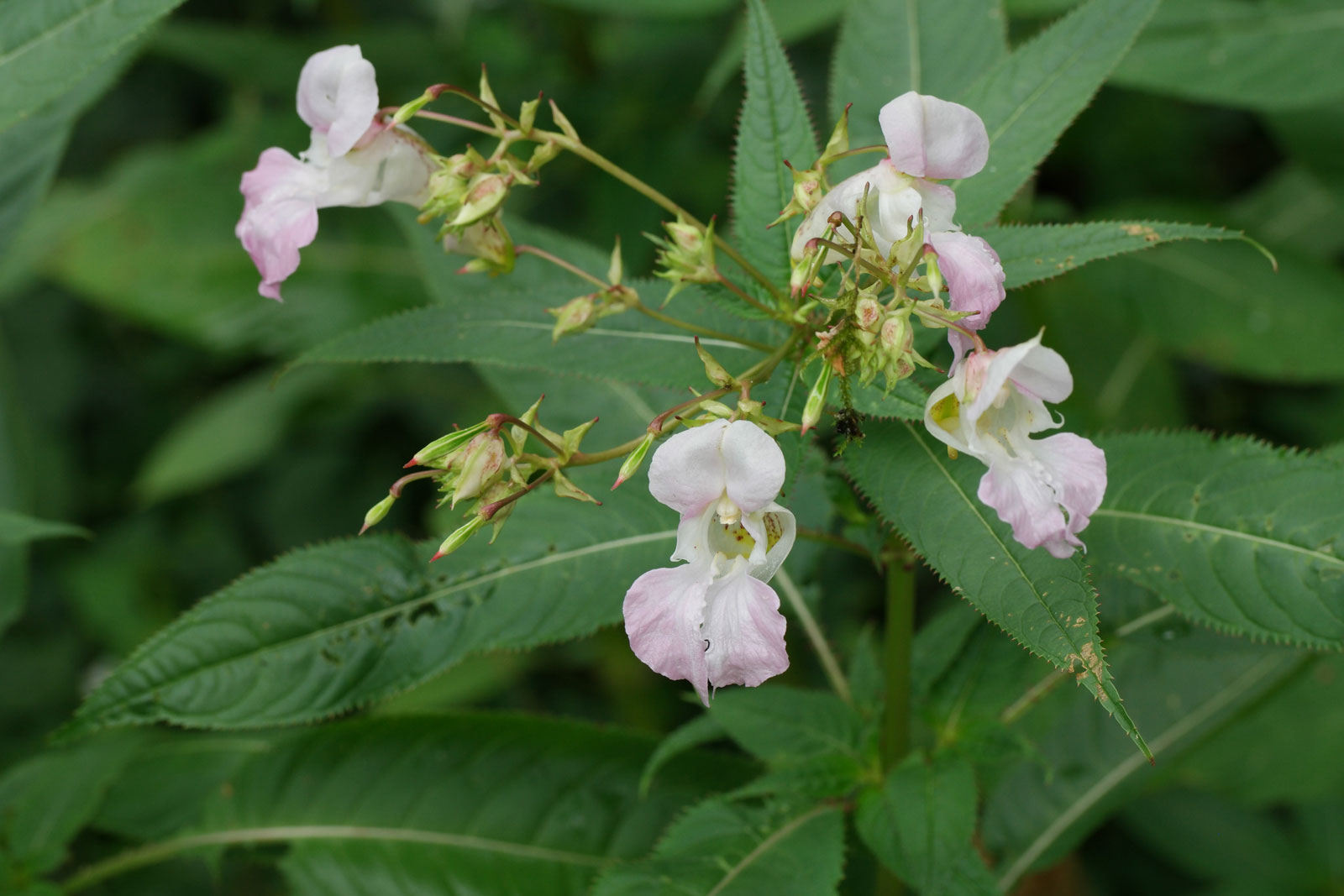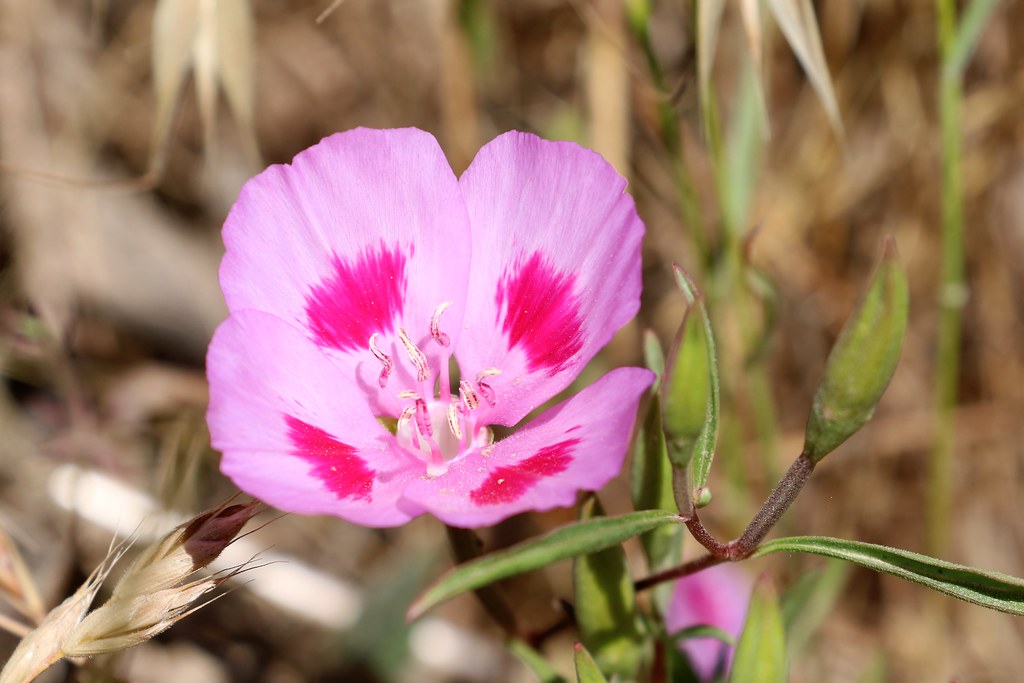Introduced species: Policeman’s Helmet (Impatiens glandulifera)
Characteristics: Policeman’s helmet—also known as Indian or Himalayan balsam—is an herbaceous annual with smooth, hollow, hairless stems, ranging from 1-3 m (3-10’) tall. The sharply toothed leaves may be oblong, ovate, or elliptic, and are typically 15 cm (6”) long by 7 cm (3”) wide, growing on stout stems with small, glandular stalks at the base. The flowers range in color from white to pink to purple; they are borne individually on axillary stalks from June to October. The unusual flower shape (irregular, with two of the five petals and two of the three sepals fused, the latter forming a short spur) resembles that of an English constable’s helmet, giving rise to one of the common names for this plant. The fruit is a five-chambered capsule. Native to India and the western Himalaya, it will grow in a variety of habitats, but generally requires high soil moisture, making regional streams a favorite place to spread in the Pacific northwest.
Spread: Policeman’s helmet spreads by seed. Each capsule may contain up to 800 seeds; touching the capsule causes it to explode when ripe, throwing seeds up to 20’ and enabling the plant to spread in the moist habitats it favors. Seeds may also be distributed by water. Native to India and the western Himalayan region, Policeman’s helmet was introduced as an ornamental plant in the United Kingdom (where it is considered one of the “top 20” noxious weeds), and subsequently brought to the US.
Control: Hand-pulling of the whole plant will remove it fairly easily. Established stands will likely have a seed bank that remains viable for two years, so follow-up control is necessary.
Native Replacement: Farewell-to-spring (Clarkia amoena) is a native, self-seeding annual with striking pink flowers that will do well in habitats occupied by this month’s weed. The late spring and summer blooms are a pollinator favorite, and a delightful garden addition.


